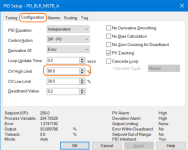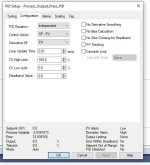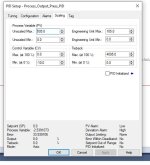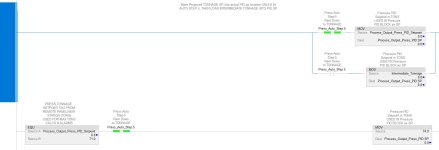40mpg
Member
Hello all,
I have an issue with a PID block in RsLogix 5000.
The parameters are
P: 3.25
I: 0.11
D: 0.01
The Set Point is 71 psi
This loop has been used for over a decade. The problem is the PV never reaches the Set Point of 71, it hovers at 68-69 and cuts off. I've tried to increase the P, and it still hovers at 68-69. Lower I and D to 0 and it never goes pass 5 psi.
I am starting to think the valve ( the device the CV is trying to control) is starting to go bad after 16 years in operation.
The Output always maxes at 2 Volts ( 0 - 10 Volts).
Anyone have any suggestion on what I can do?
I have an issue with a PID block in RsLogix 5000.
The parameters are
P: 3.25
I: 0.11
D: 0.01
The Set Point is 71 psi
This loop has been used for over a decade. The problem is the PV never reaches the Set Point of 71, it hovers at 68-69 and cuts off. I've tried to increase the P, and it still hovers at 68-69. Lower I and D to 0 and it never goes pass 5 psi.
I am starting to think the valve ( the device the CV is trying to control) is starting to go bad after 16 years in operation.
The Output always maxes at 2 Volts ( 0 - 10 Volts).
Anyone have any suggestion on what I can do?







